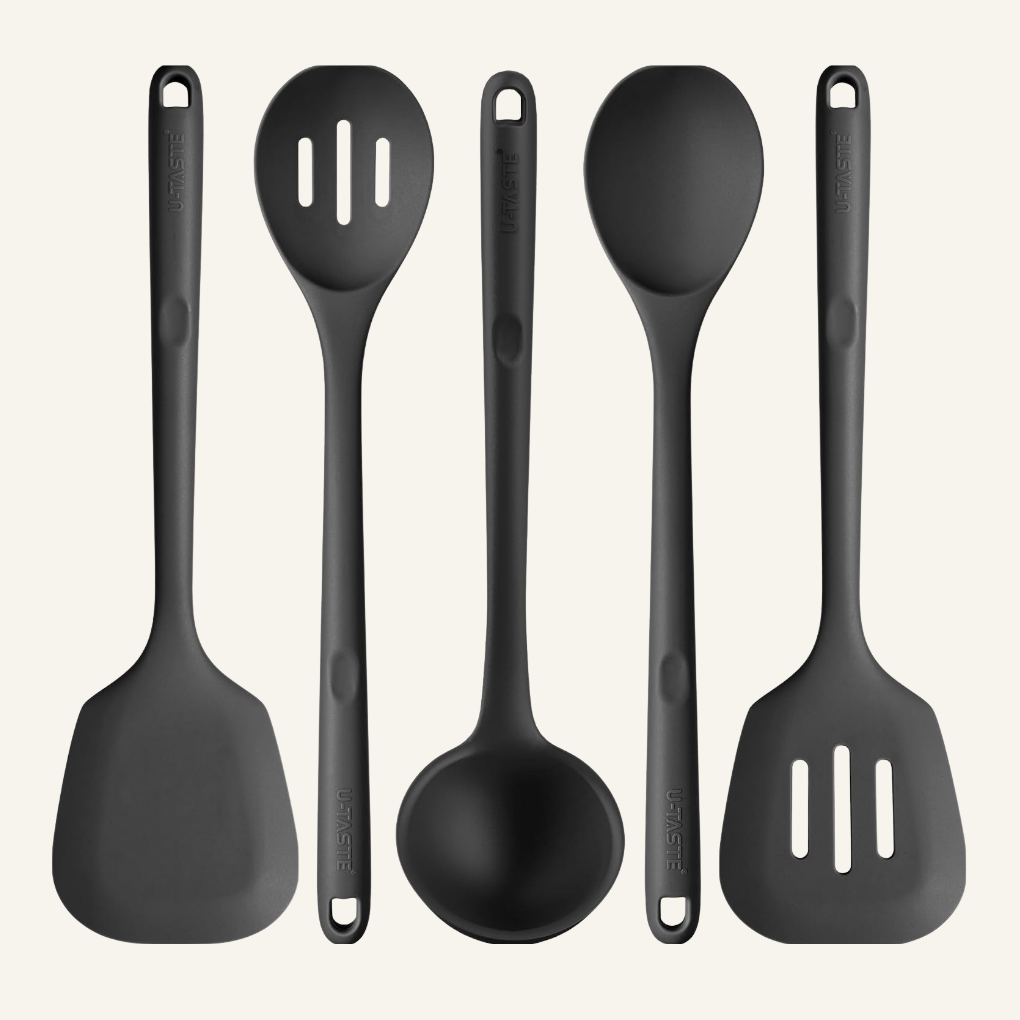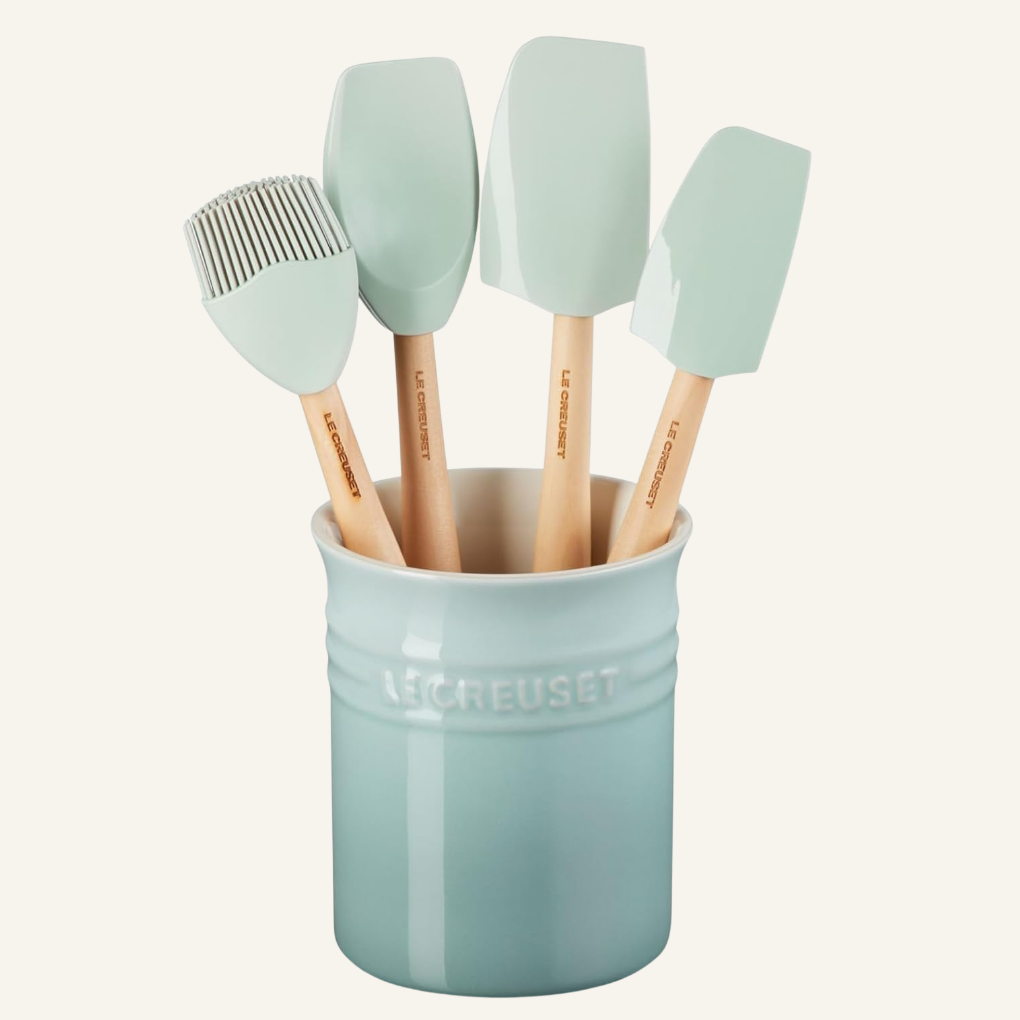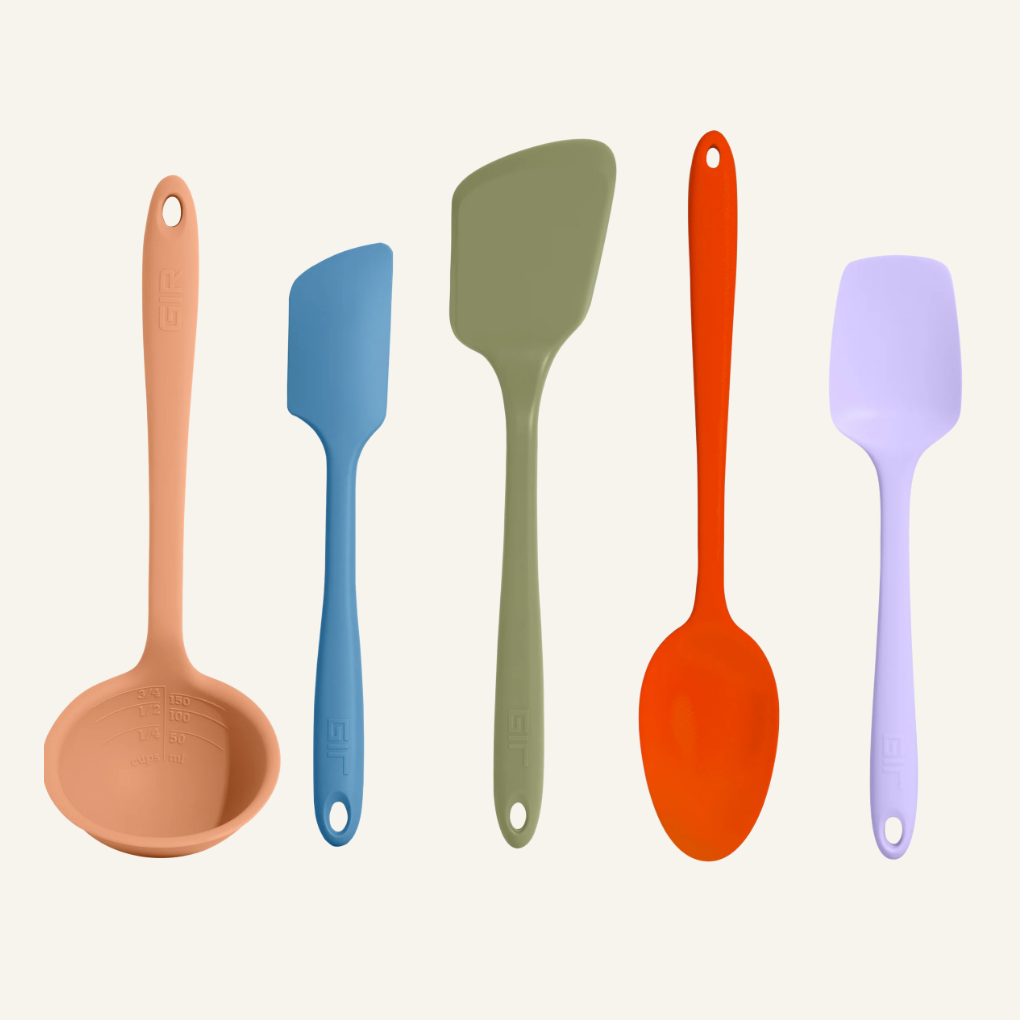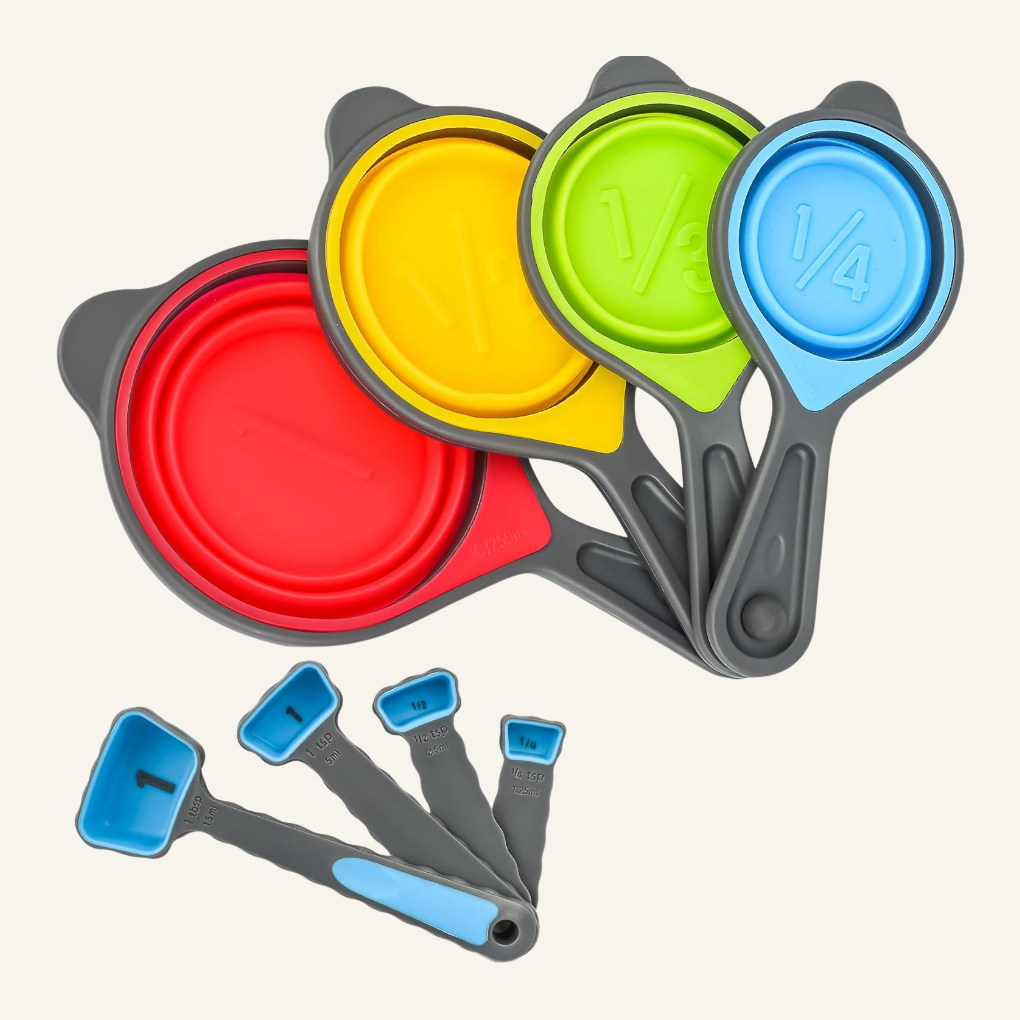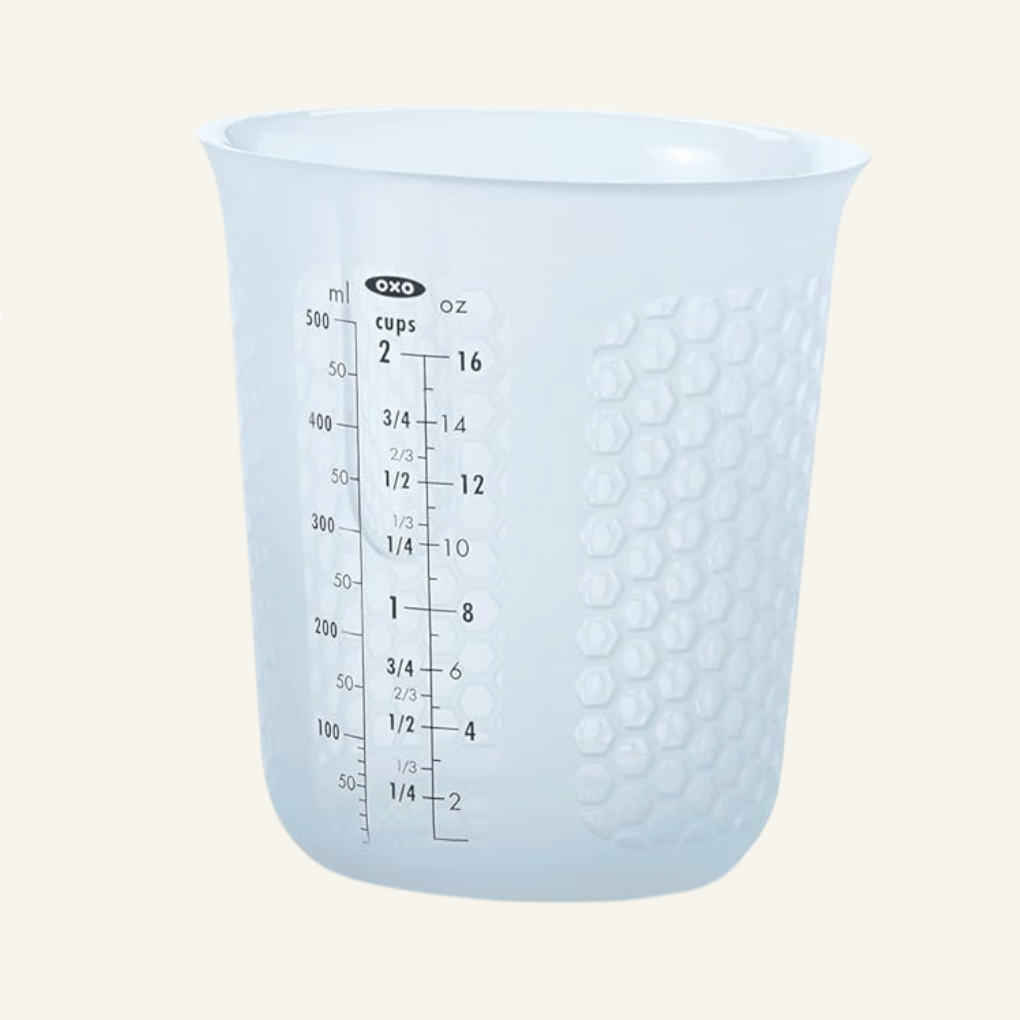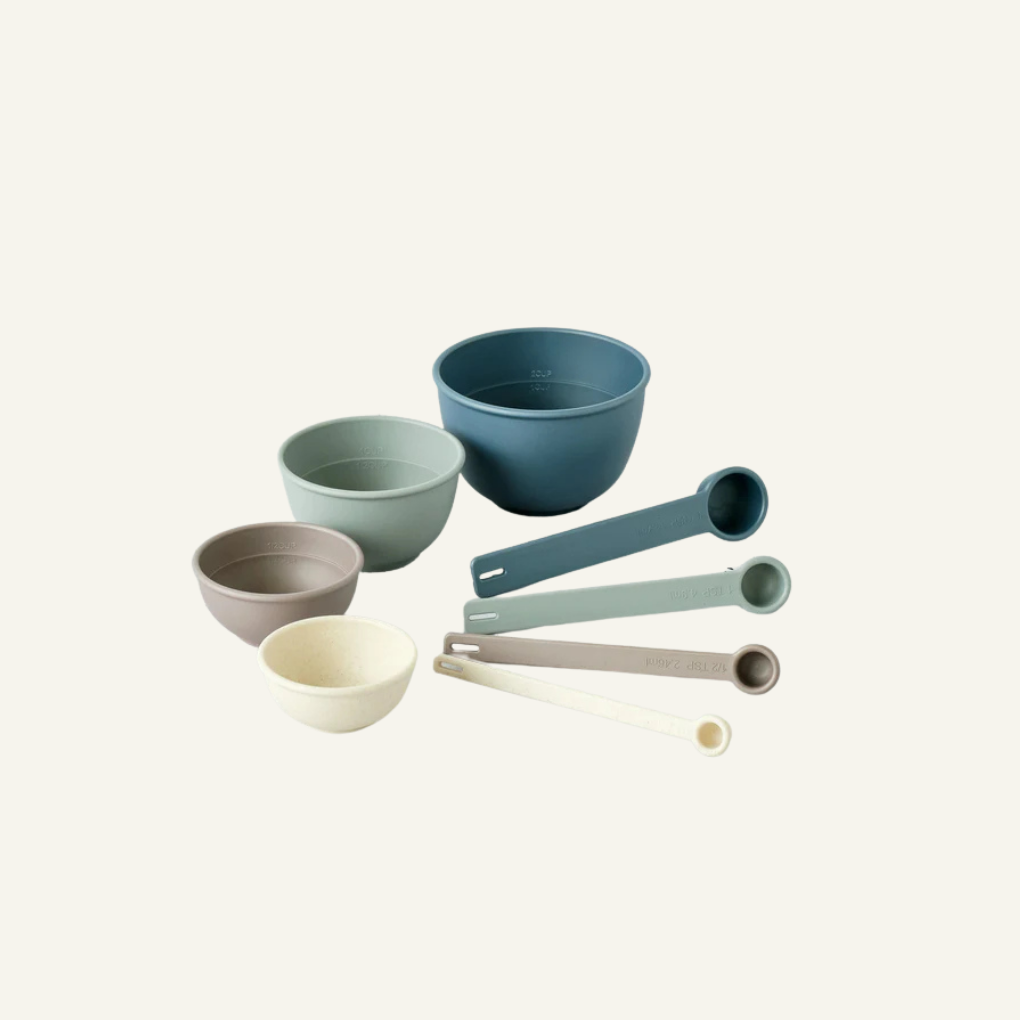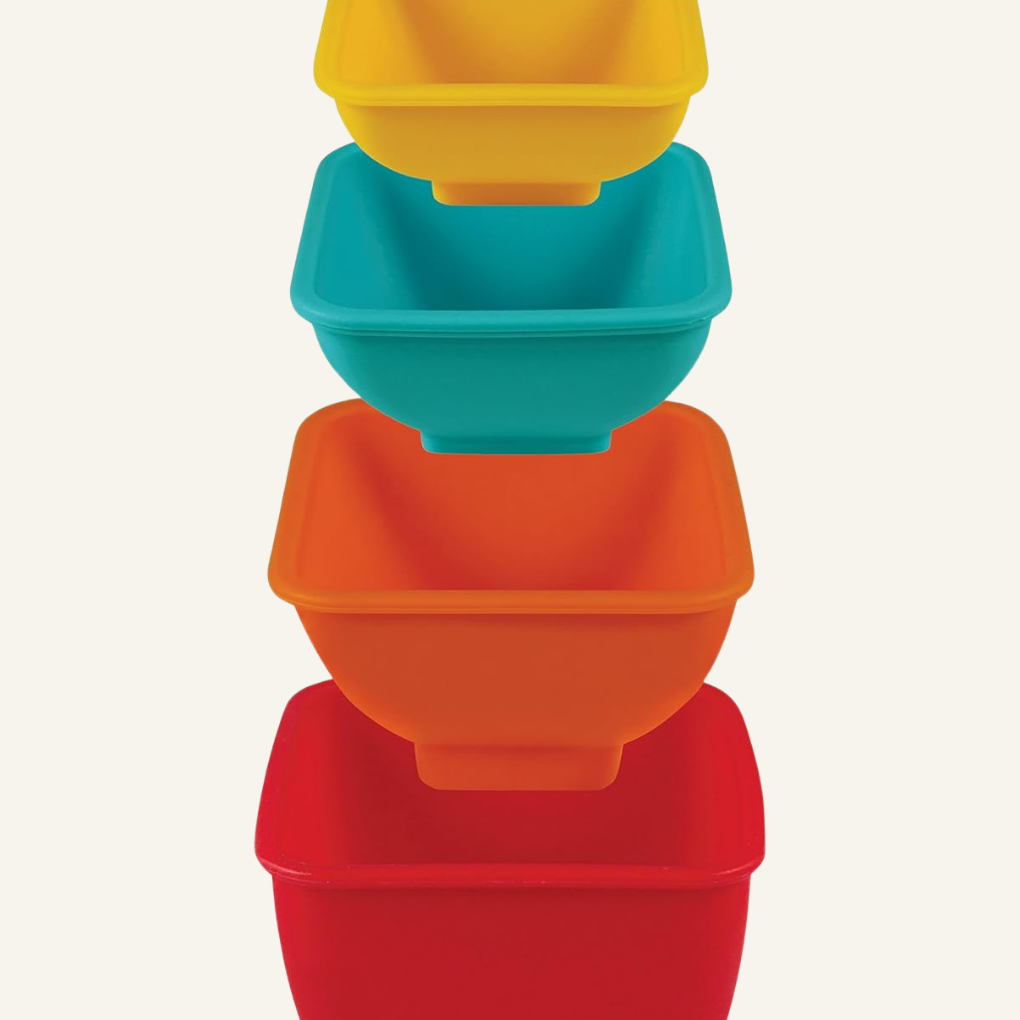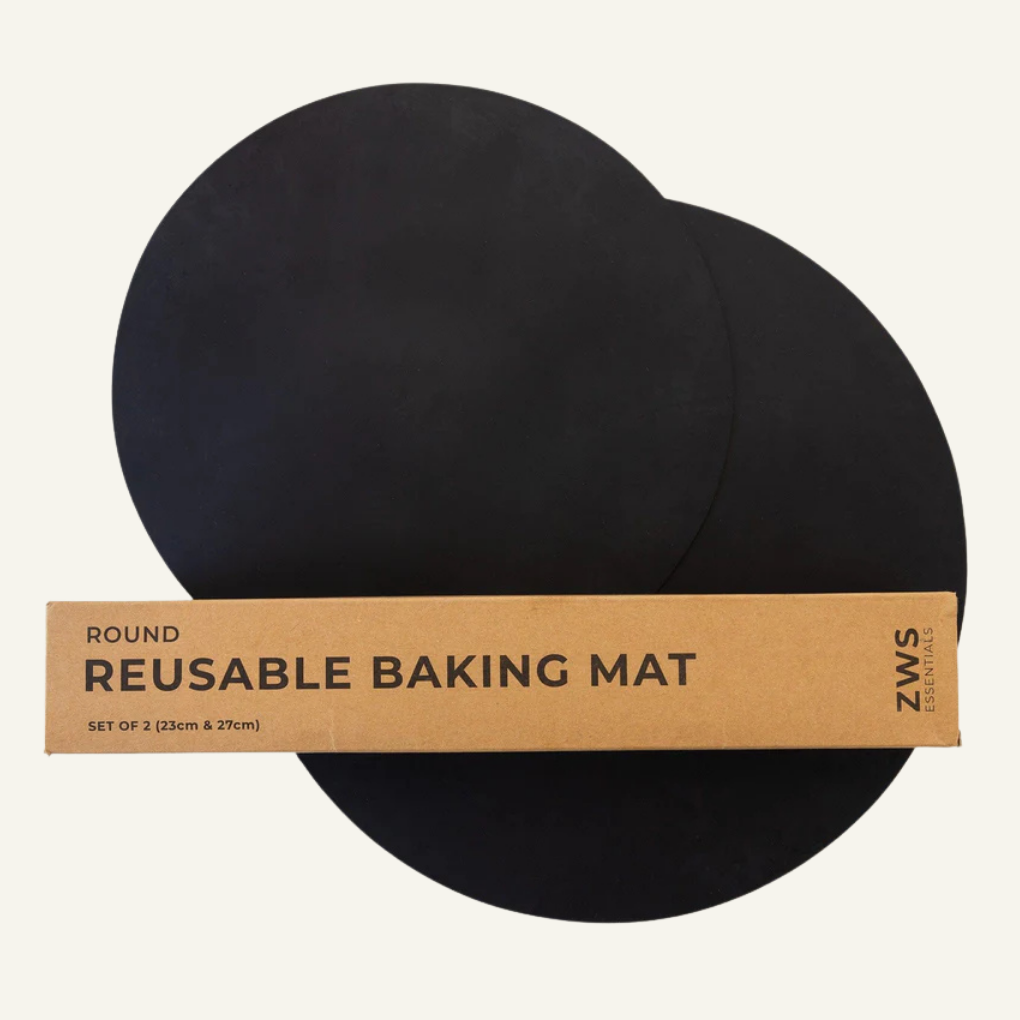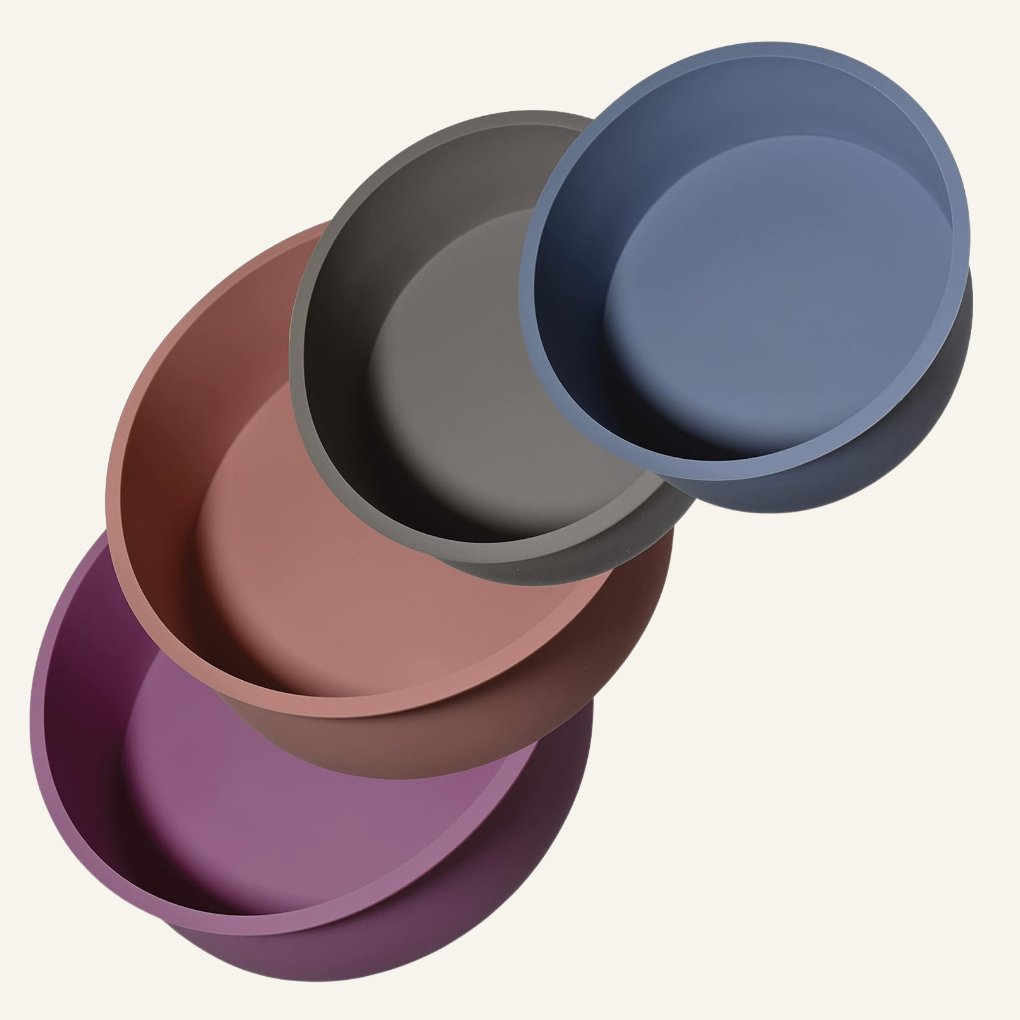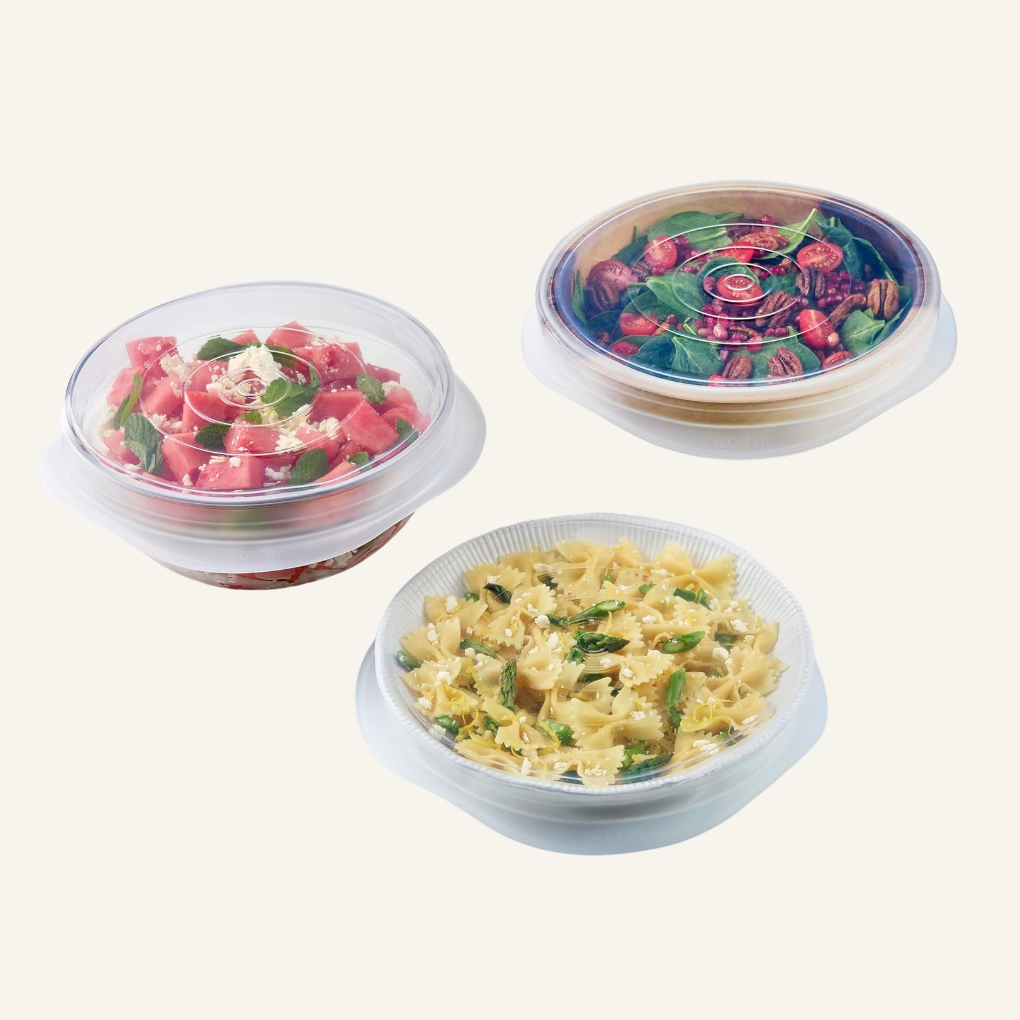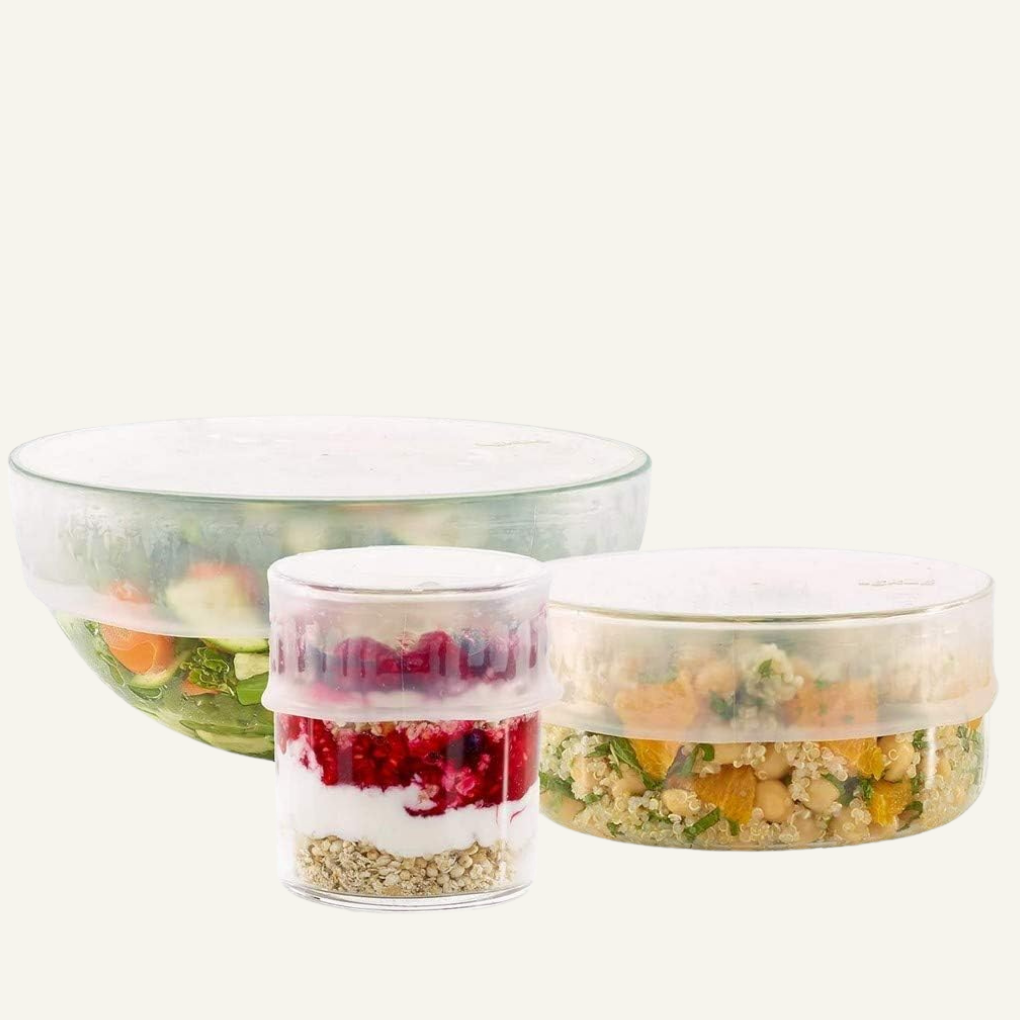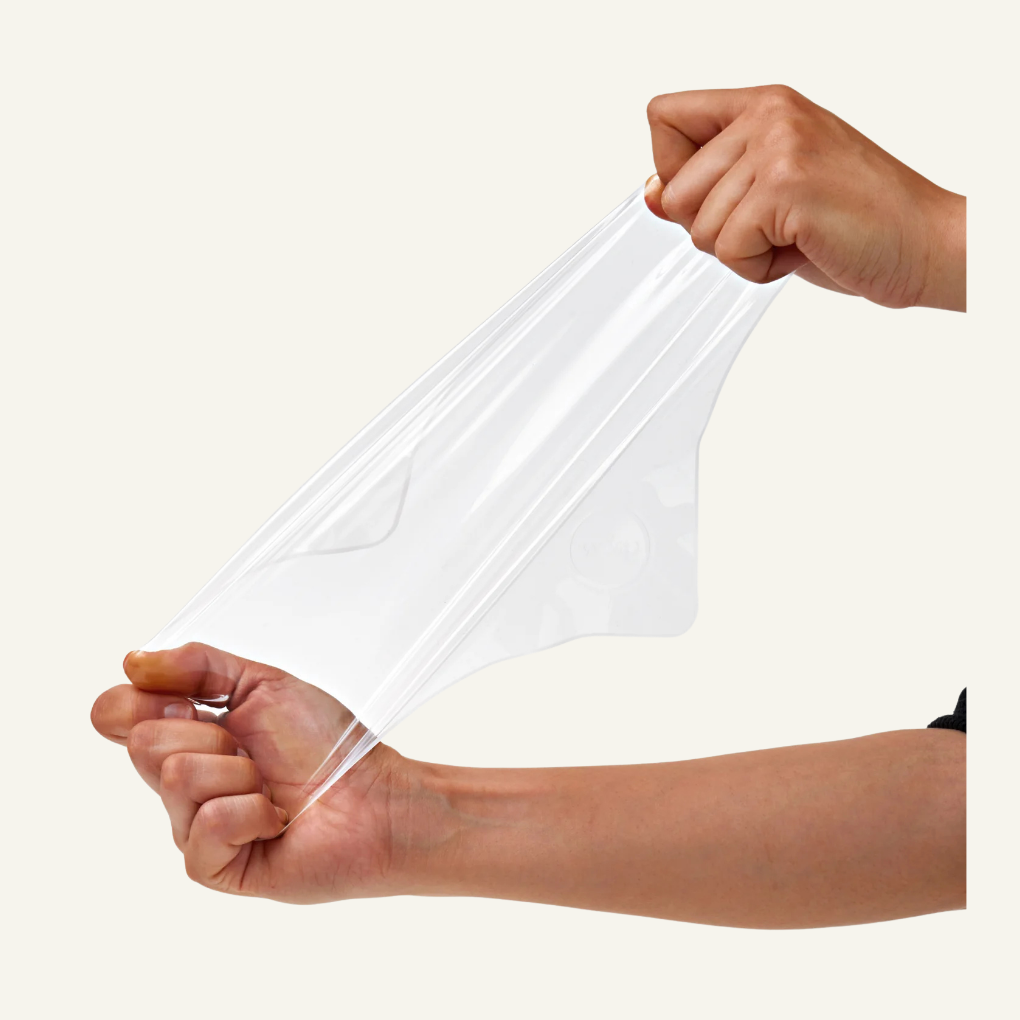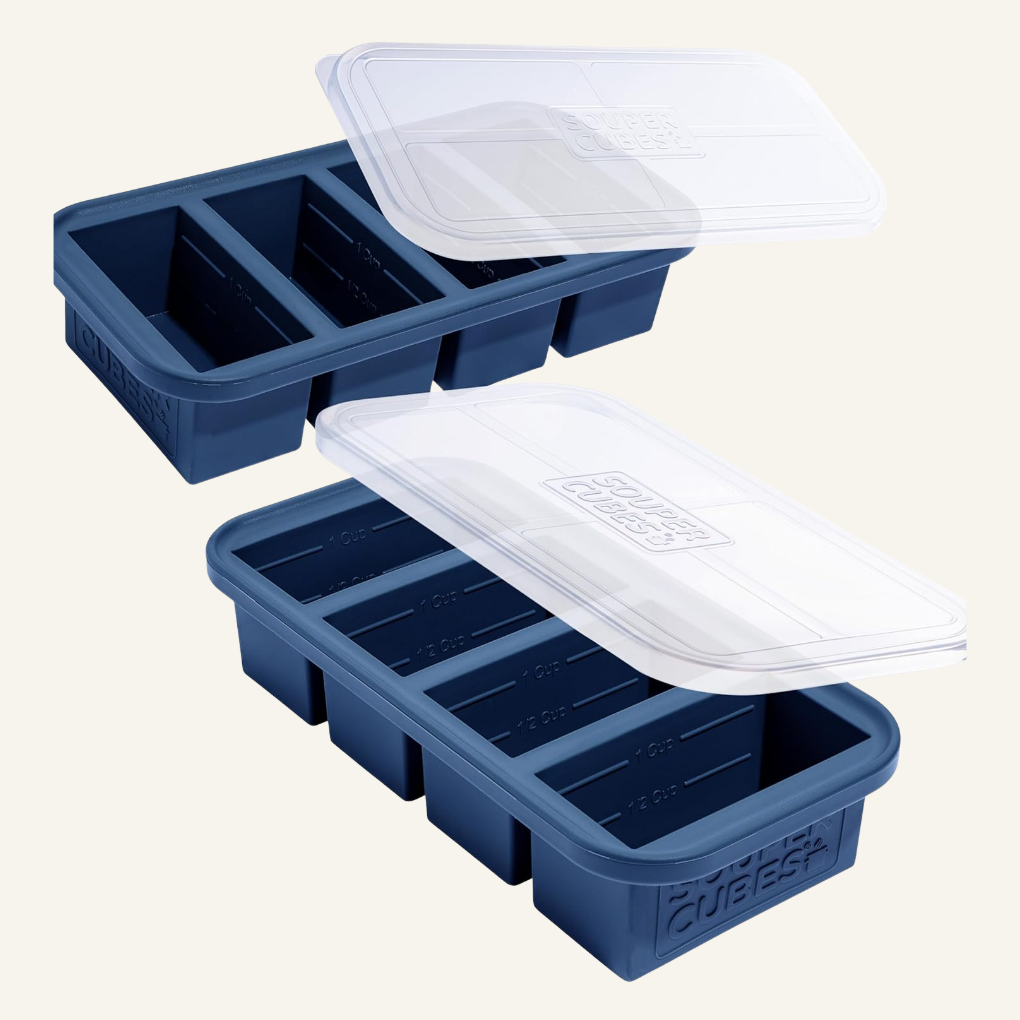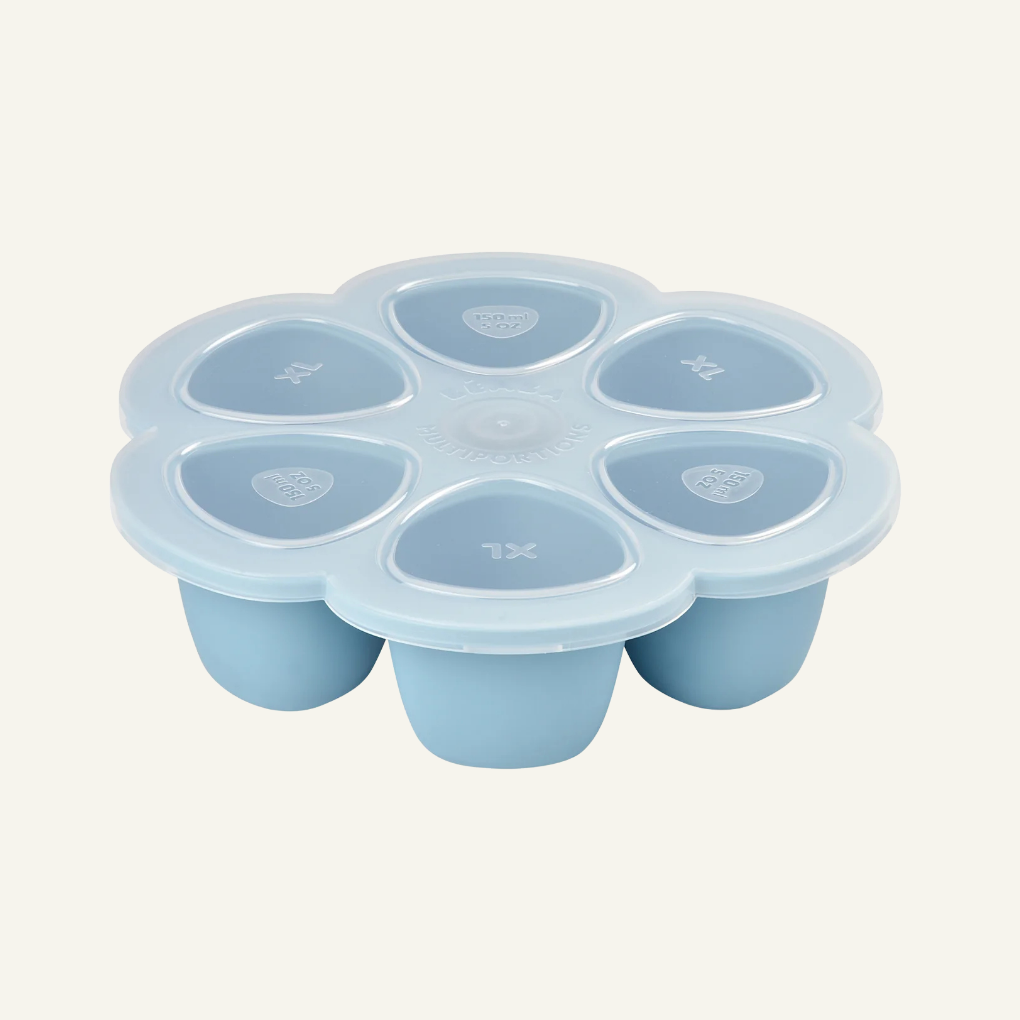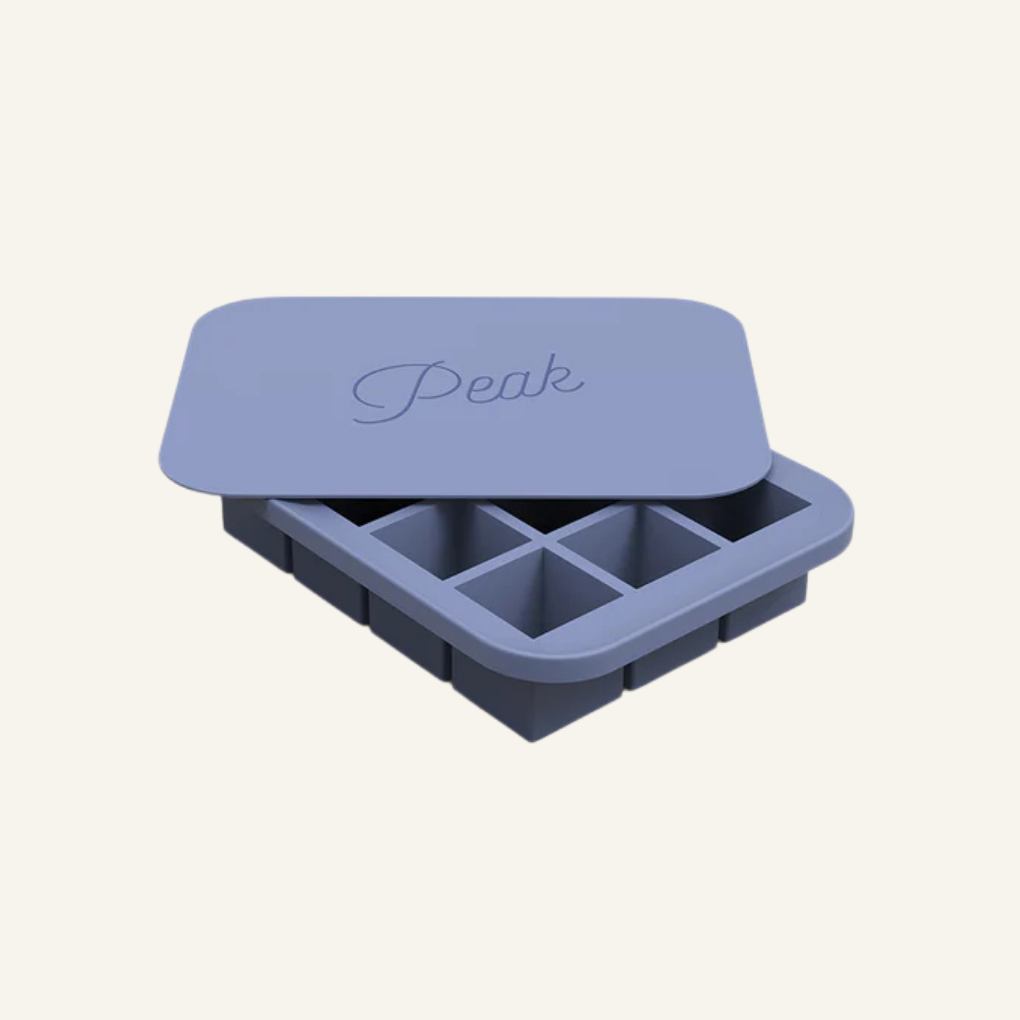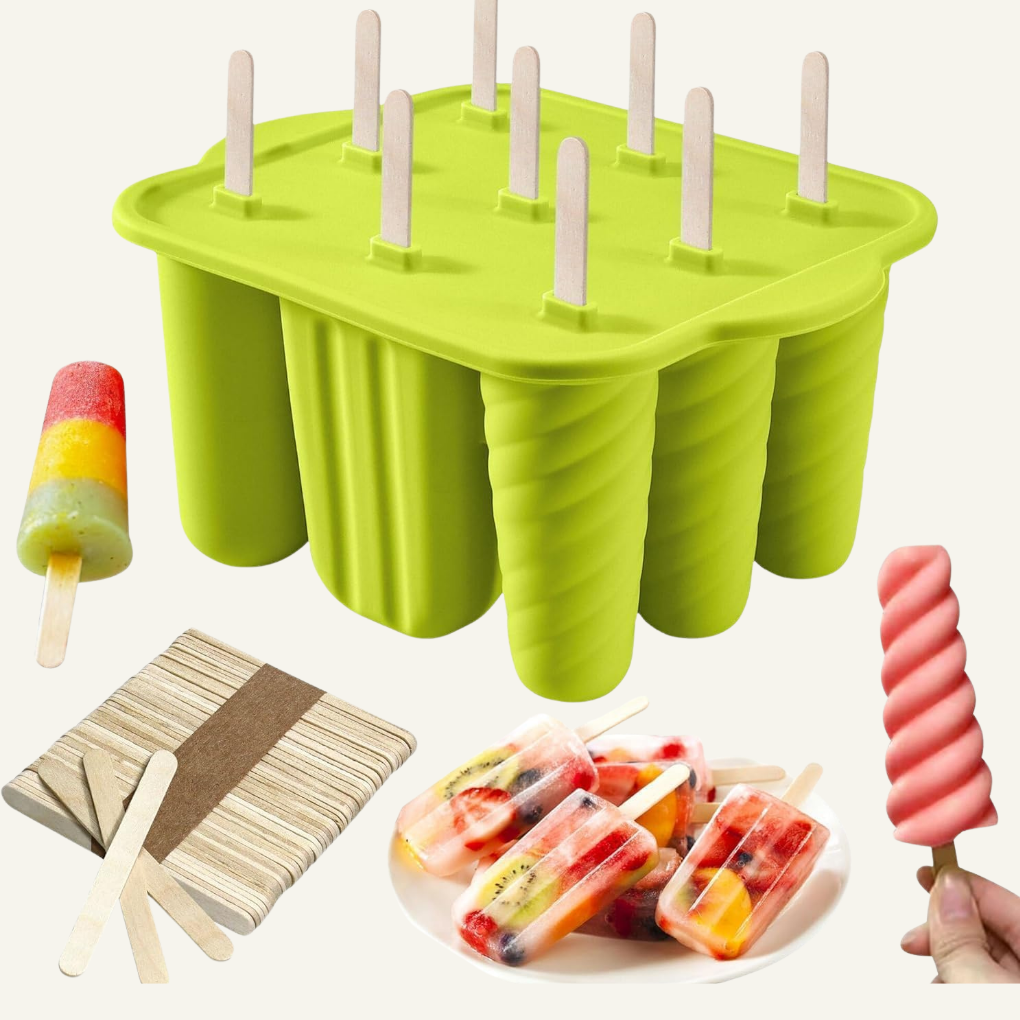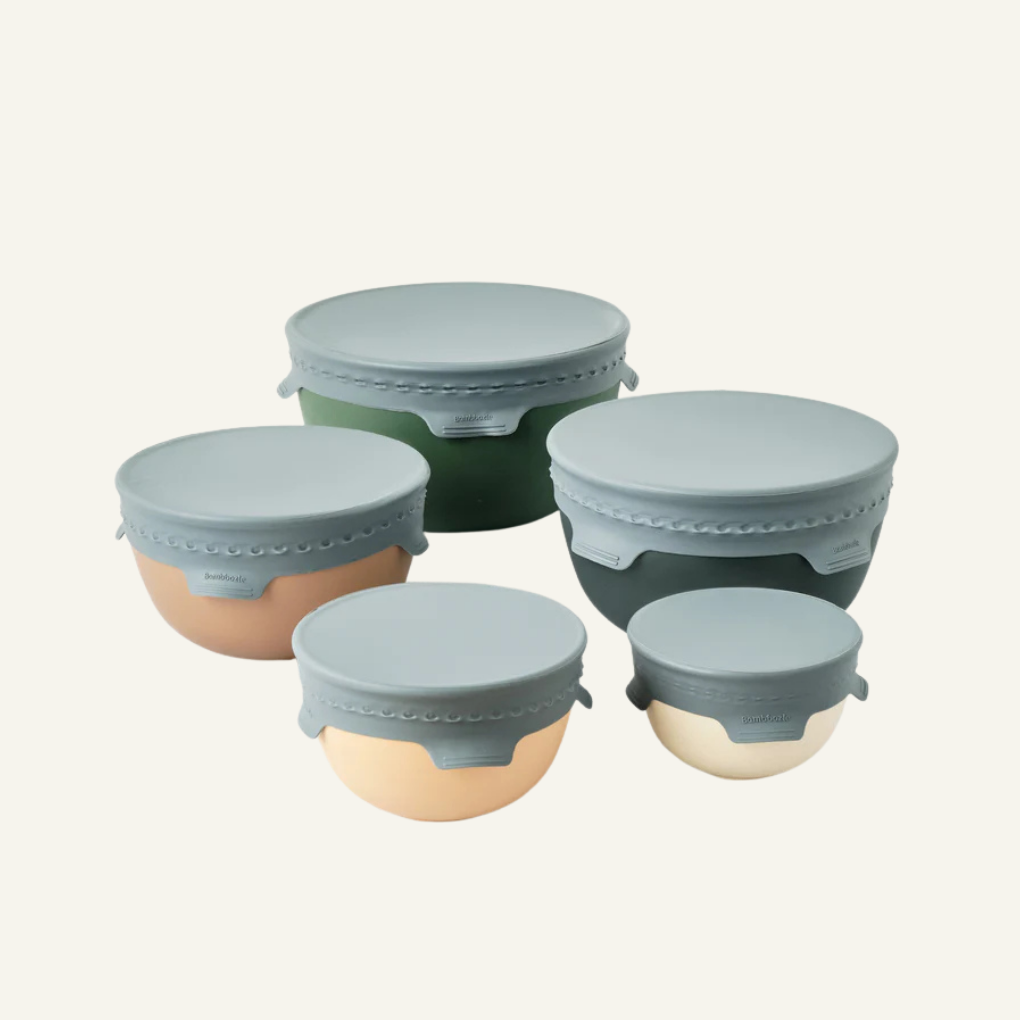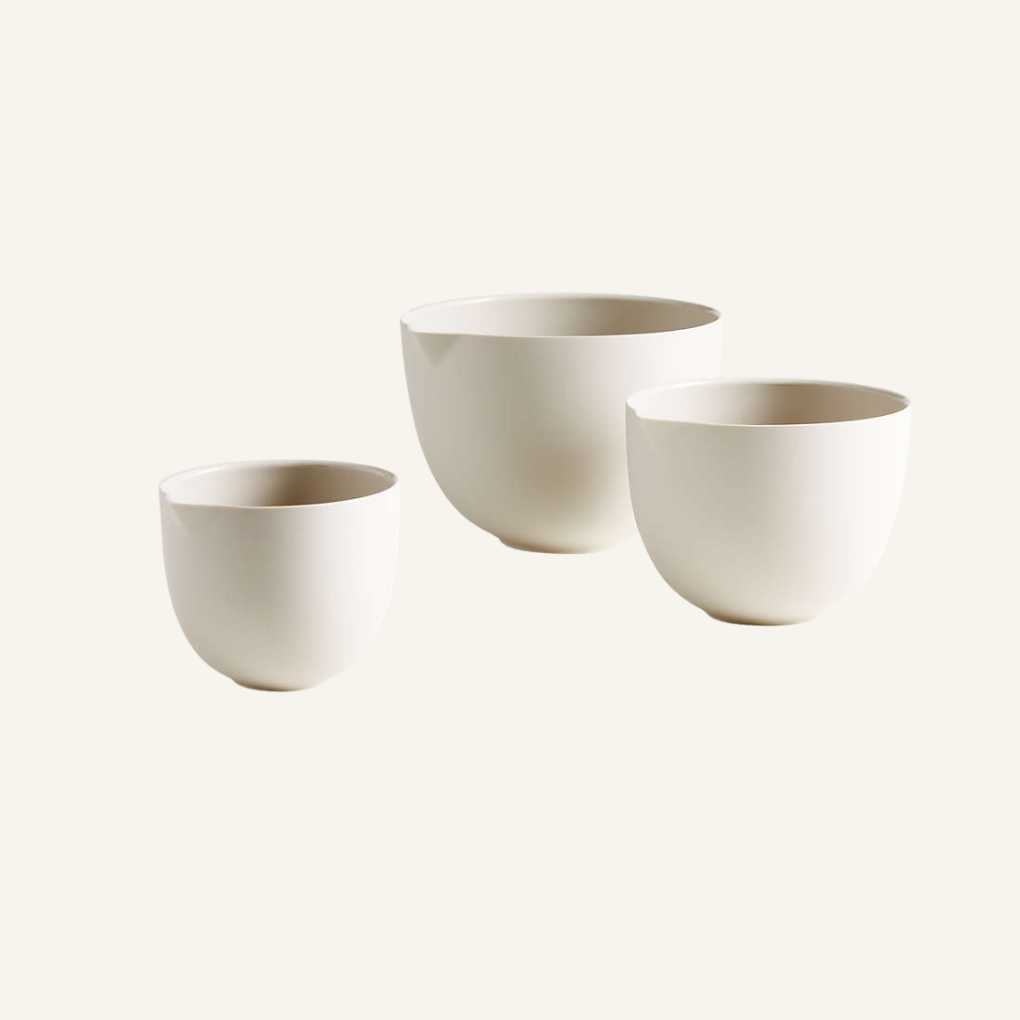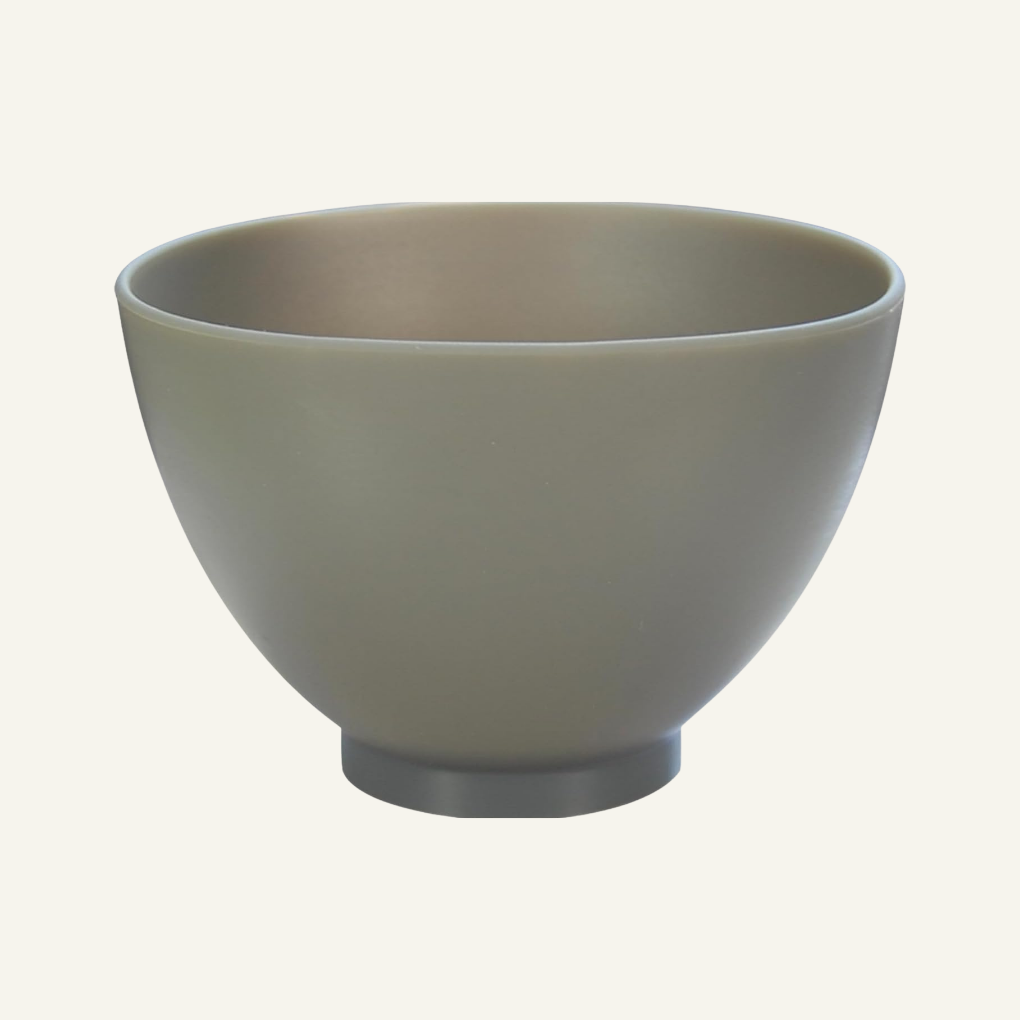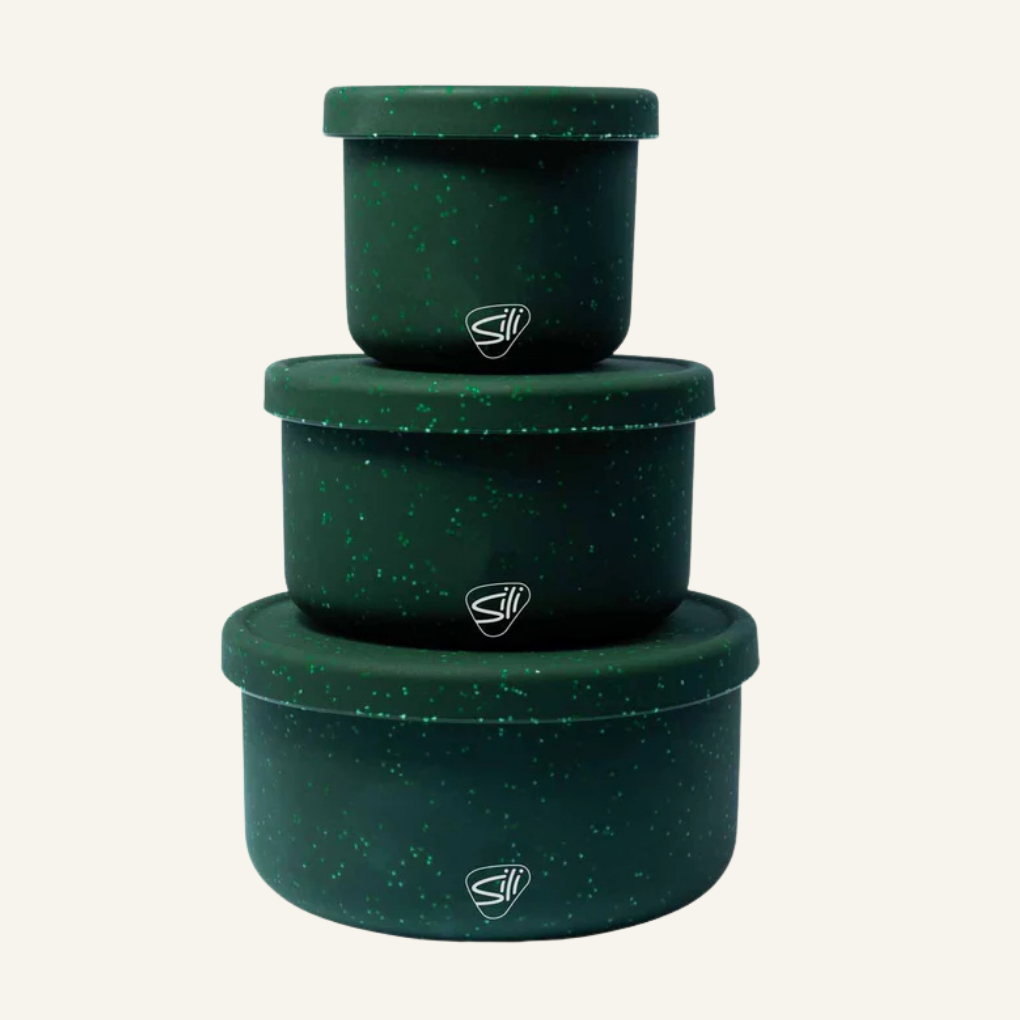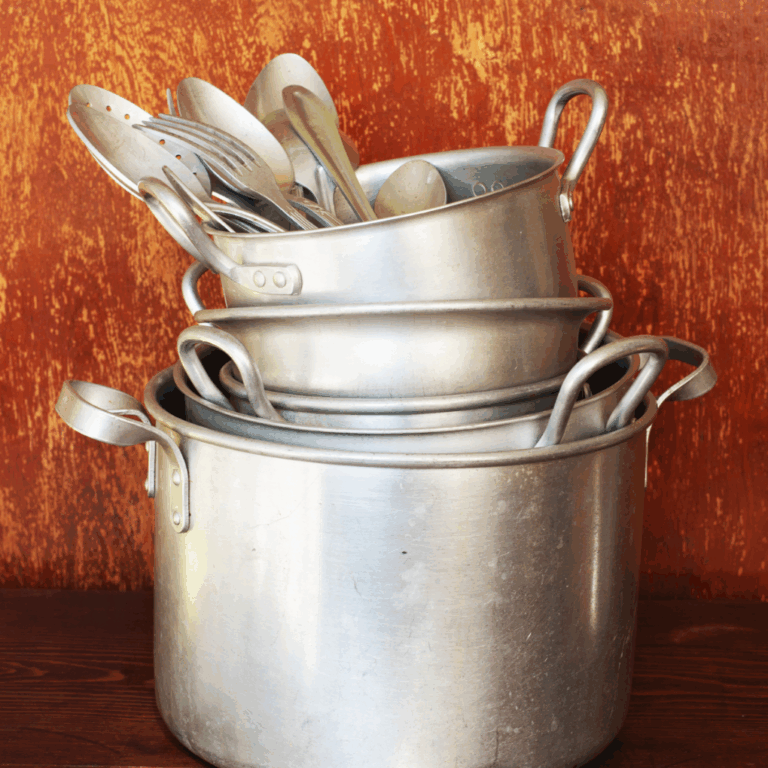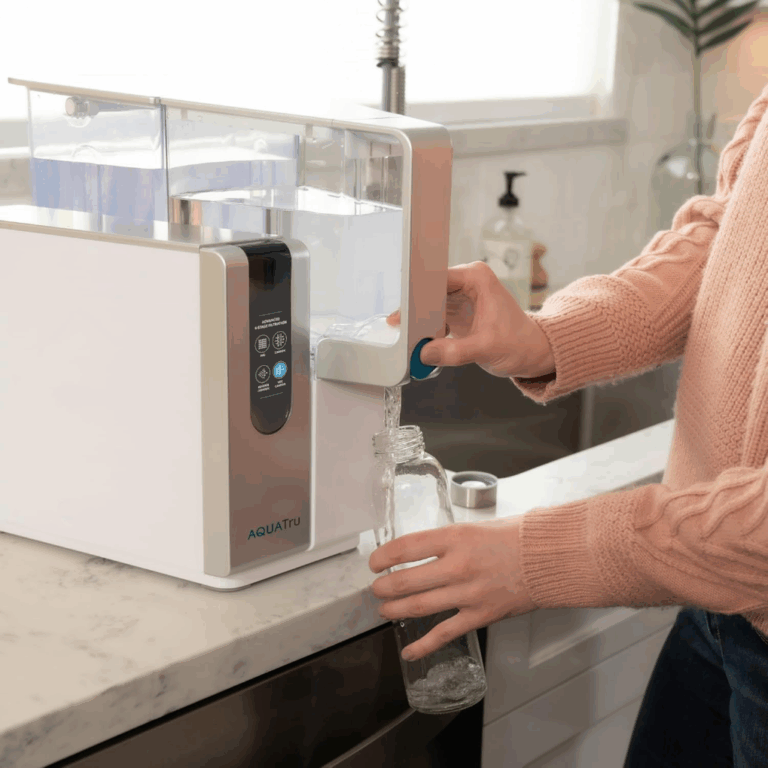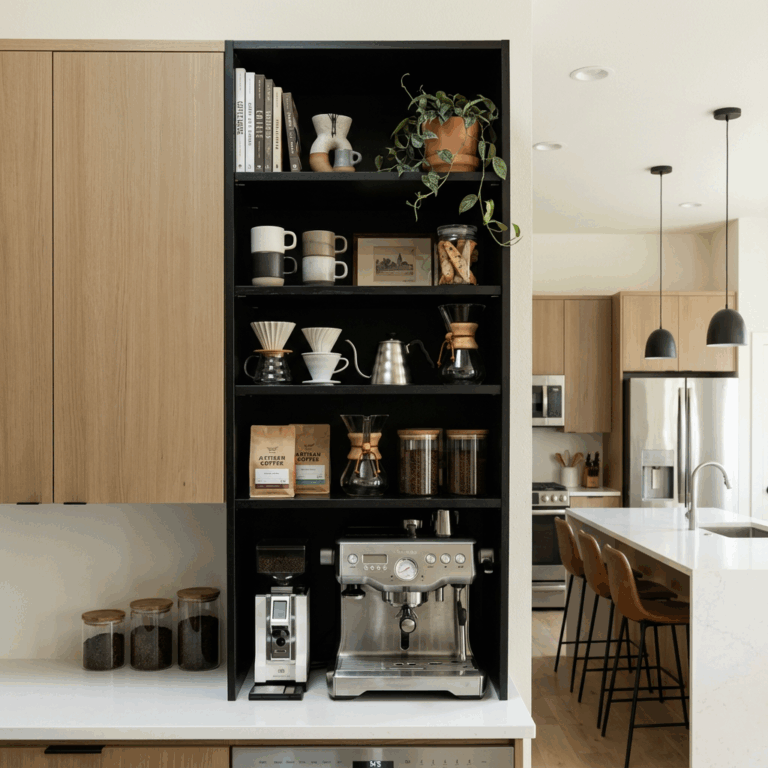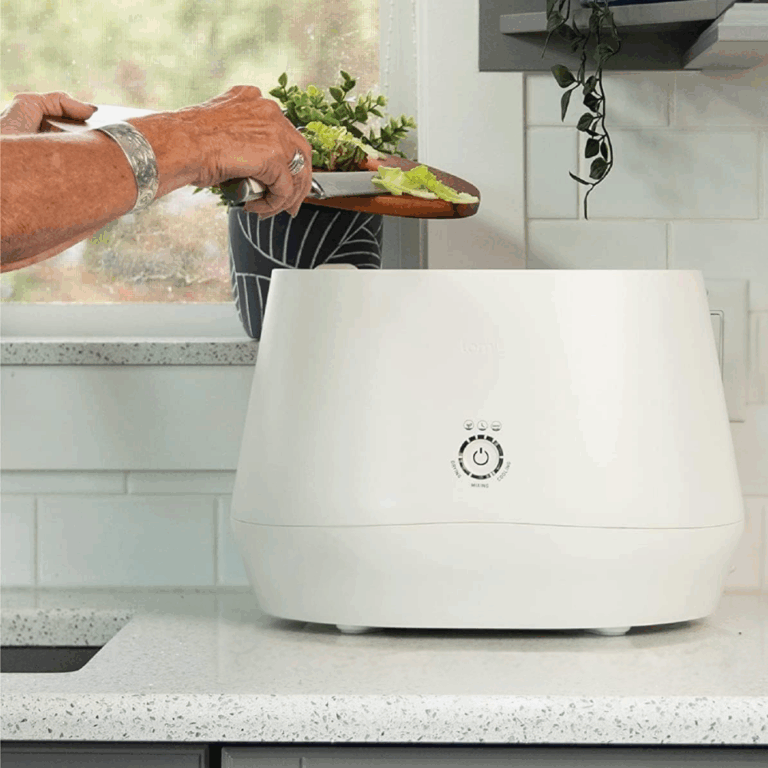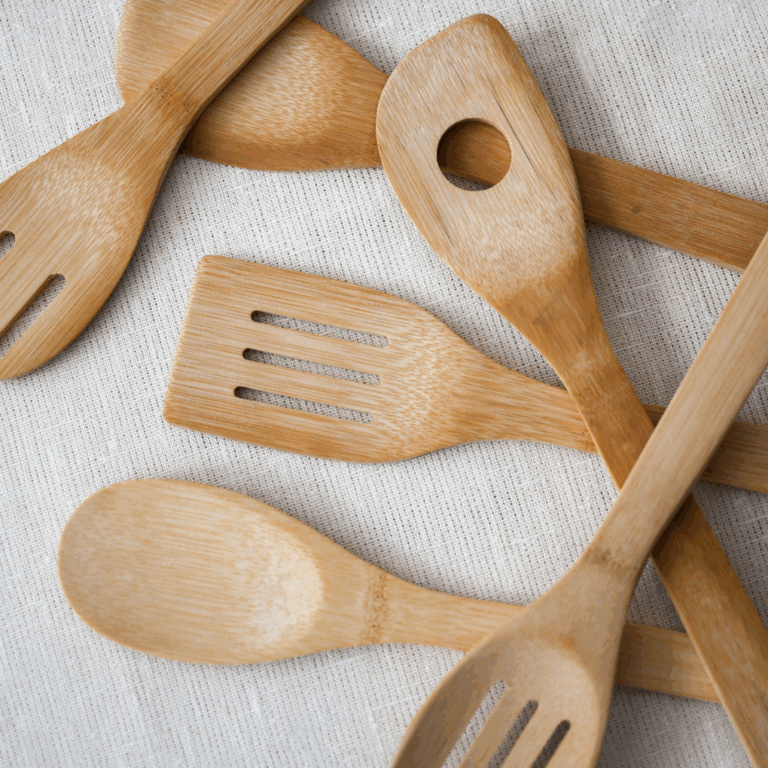
Key Takeaways
- Food-grade silicone is safe for everyday cooking when used within normal oven and baking temperatures.
- Quality matters — low-grade silicone with fillers can leach more chemicals, especially with greasy foods.
- Silicone isn’t biodegradable, but it’s reusable and can replace hundreds of disposable items like foil or parchment paper.
- Care tips: avoid open flames, keep within heat limits, and use soft utensils to extend its life.
Silicone bakeware and utensils have become staples in modern kitchens — from colorful spatulas to flexible baking mats and reusable muffin cups. They’re often marketed as a safer alternative to plastic and easier to clean than metal, but many home cooks still ask the big question: Is silicone safe to cook with?
But with more people paying attention to chemicals in cookware and the rising concern about microplastics in our food, it’s natural to wonder: Is silicone safe to cook with?
Food-grade silicone is widely considered safe for everyday cooking and baking. It’s FDA-approved, BPA-free, and stable at normal cooking temperatures, so it doesn’t release microplastics the way many plastics do.
A study in Food Additives & Contaminants looked at how chemicals can move from silicone bakeware into food. The results showed that the outcome really depends on the food and the quality of the bakeware. For example, milk-based foods barely picked up anything, but greasy foods like meatloaf caused more chemicals (called siloxanes) to leak out. The good news? The more the silicone bakeware was used, the less it leaked. That means high-quality silicone is usually safer once it’s been through a few rounds of baking.
Still, not all silicone is created equal. Quality matters, and following a few best practices will help you enjoy the benefits of silicone without the risks.
What Is Food-Grade Silicone?
Food-grade silicone is different from cheap fillers. High-quality pieces stay stable under heat, while low-grade versions can break down faster and may release more chemicals.
- Silicon is a naturally occurring element, found in sand, quartz, and even in the Earth’s crust.
- Silicone, on the other hand, is a man-made material created by bonding silicon with oxygen, carbon, and hydrogen. The result is a flexible, rubber-like polymer that can withstand heat, cold, and everyday kitchen wear and tear.
When you see products labeled as food-grade silicone, that means they’ve been manufactured to meet strict safety standards for direct contact with food. Food-grade silicone is BPA-free, phthalate-free, and lead-free, and it won’t release harmful chemicals when used within normal cooking temperatures. Reputable brands will carry a food-grade label or FDA approval, so it’s worth checking before you buy.
What makes food-grade silicone so appealing in the kitchen? It combines several properties that are difficult to find in other materials:
- Heat resistance: Most food-grade silicone can handle up to 428°F (220°C), making it safe for baking, stovetop stirring, and microwave use.
- Odor and stain resistance: It doesn’t hold onto strong smells or discolor easily, even after repeated use.
- Non-stick surface: Baked goods, candies, and frozen treats pop out of silicone molds with minimal effort.
- Flexibility: From spatulas to stretch-and-seal lids, silicone bends without breaking and springs back into shape.
These qualities explain why silicone has taken over modern kitchens it’s durable, versatile, and easy to use. But as with any cookware, the safety of silicone depends on its quality and how you use it.
Benefits of Using Silicone Cookware
People love silicone cookware because it makes cooking easier without many of the downsides of plastic or metal. Plastic can warp or leach chemicals, and metal can scratch or rust. Silicone gives you the best of both: it’s light, flexible, and tough enough for everyday meals.
Here are some of the standout benefits of using silicone cookware:
- Flexibility and durability: Silicone bends without breaking, making it perfect for spatulas, baking molds, and stretchable lids. A silicone spatula can scrape the sides of a pan without damaging nonstick coatings, and baking cups pop muffins out with ease. Despite the softness, quality silicone doesn’t wear down quickly — it can last for years if cared for properly.
- Non-stick performance: One of silicone’s biggest advantages is its naturally non-stick surface. Baking mats and muffin cups release food easily, often with no need for extra oil, parchment paper, or foil. This not only saves time during cleanup but also cuts down on waste from single-use kitchen items.
- Heat-resistant: Most food-grade silicone is safe for use in ovens, microwaves, and freezers, usually up to about 428°F (220°C). That versatility means you can use the same silicone mold for freezing homemade popsicles and baking cupcakes the next day.
- Easy to clean: Because silicone resists stains and odors, it’s simple to keep fresh. Many items are dishwasher-safe, though hand washing with mild detergent will keep them looking newer for longer. Unlike some plastics, silicone won’t hold onto strong smells like garlic or turmeric.
- Reusable and eco-friendly: While silicone isn’t biodegradable, it’s highly reusable, which helps offset its environmental impact. A single silicone baking mat can replace hundreds of sheets of parchment paper or rolls of aluminum foil. Some specialized recycling programs also accept silicone, giving it a second life when you’re finished with it.
Silicone cookware offers a mix of flexibility, non-stick convenience, and durability that’s hard to match. It’s a modern kitchen solution designed to make cooking and cleanup easier while reducing reliance on disposable products.
Safety of Silicone for Cooking
Food-grade silicone is widely recognized as safe for everyday cooking and baking. Regulatory agencies like the FDA and the European Food Safety Authority (EFSA) have approved its use for direct contact with food, and studies show that it remains stable under normal kitchen conditions. Unlike plastics, which are prone to breaking down and releasing chemicals when exposed to heat, silicone is far less likely to leach harmful substances into your meals.
Another advantage is its versatility. Most food-grade silicone is safe to use in both ovens and microwaves, as long as you stay within the recommended temperature range (usually up to 428°F or 220°C). That means you can bake a batch of muffins, reheat leftovers, or even freeze homemade popsicles all using the same silicone mold.
Silicone isn’t indestructible. It should not be placed directly under a broiler or over an open flame, as extreme temperatures can cause the material to degrade, releasing odors or reducing its lifespan. As long as you respect those limits and choose high-quality, food-grade products, silicone offers a reliable and safe option for cooking and baking.
Don’t Miss: Does Silicone Have Microplastics? What You Need to Know About This Plastic Alternative 🤔 Curious if silicone secretly adds to the microplastic problem? Read more →⚠️Potential Risks and Considerations
While silicone is safe in general, it’s not risk-free:
- Low-quality products: Some silicone cookware contains fillers or additives. Check for a food-grade label and avoid products that turn white when pinched.
- Temperature resistance: Going beyond recommended heat limits can lead to material degradation or unwanted odors.
- Sharp utensils: Knives and metal tools can puncture or tear silicone surfaces.
- Sustainability: Silicone is not biodegradable. Disposal options are limited, though some recycling programs and specialized centers accept it.
Our Top Silicone Swaps for the Kitchen
If you’re ready to replace plastic tools with safer, longer-lasting options, silicone is one of the easiest upgrades you can make. Each one is food-grade, heat-resistant, and designed to reduce both waste and microplastic exposure, making your time in the kitchen just a little bit healthier.
Care and Maintenance of Silicone Cookware
Taking good care of your silicone cookware helps it last longer, stay safe, and perform at its best. Here are some simple maintenance tips:
🧼 Keep It Clean and Fresh
Wash the silicone with warm, soapy water after each use. A soft sponge is usually enough — avoid abrasive scrubbers, which can wear down the surface. For stubborn grease, soak in hot water with a bit of baking soda before rinsing clean.
🍳 Smart Cooking Habits
Stick to the manufacturer’s recommended temperature range — most silicone bakeware is rated safe up to about 428°F (220°C). Pushing past this can cause the material to weaken, discolor, or release odors that linger in your kitchen.
Avoid placing silicone directly under a broiler, on a stovetop burner, or over an open flame, since these extreme heat sources can scorch or warp it. If you need to crisp or brown food, it’s best to use silicone inside a baking dish or paired with a metal sheet pan for support.
🍴 Choose the Right Utensils
Use wooden, silicone, or plastic utensils with your silicone bakeware. Cutting directly on the surface with sharp knives or metal tools can shorten its lifespan and create spots where bacteria may hide.
🌱 Longevity and Storage
Dry silicone completely before storing to prevent musty smells. Keep it flat (for mats) or stacked loosely (for molds) so it doesn’t bend out of shape. Investing in durable, high-quality pieces also reduces the need for frequent replacements.
- Avoid Direct Sunlight: Prolonged exposure to UV light can fade colors and make silicone more brittle over time—store items in a drawer or cabinet instead of leaving them on the counter or windowsill.
- Don’t Compress for Long Periods: Stuffing silicone into tight spaces or leaving heavy items on top can cause permanent creases. Give it room to “breathe” in storage.
- Watch Out for Strong Odors: Silicone can absorb smells from pungent foods (like garlic or onions). If this happens, a soak in baking soda and warm water or a quick bake at low heat can help remove lingering scents.
Can you boil silicone to sanitize it?
Yes. Boiling is a safe and effective way to sanitize silicone. Food-grade silicone can handle boiling temperatures without melting or warping, so dropping your spatulas, lids, or molds into a pot of boiling water for a few minutes is a simple way to kill bacteria and remove lingering odors.
This can be especially handy for items that come into frequent contact with raw meat, sticky batters, or oils that don’t always wash away in the sink. Just make sure the silicone is completely dry before storing it, since trapped moisture can encourage mildew.
Silicone vs Other Cookware
Silicone has carved out a niche in modern kitchens, but it isn’t meant to replace every other material. Here’s how it compares to some of the most common cookware options:
- Stainless steel and cast iron: These are unbeatable for high-heat cooking. If you’re searing a steak, stir-frying, or grilling, stainless steel and cast iron handle the job better than silicone ever could. They’re more durable in the long term, but they also require more care. Cast iron requires seasoning, whereas stainless steel can be used without oil. Silicone can’t match their performance at high heat, but it offers the opposite advantage: lightweight, non-stick convenience.
- Glass and ceramic: When it comes to baking casseroles or roasting, glass and ceramic provide even heating and a crisp finish that silicone molds can’t quite replicate. However, they’re heavy and fragile. Silicone doesn’t give quite the same browning effect, but it’s far easier to handle, doesn’t shatter, and makes releasing food effortless.
- Silicone: Best thought of as a complement rather than a replacement. It excels in areas where flexibility, non-stick surfaces, and quick cleanup are most valuable, such as spatulas, baking mats, ice trays, cupcake molds, and microwave cooking. But it won’t deliver the durability of cast iron or the crisping power of glass.
FAQs About: Is Silicone Safe to Cook With?
Yes, food-grade silicone is generally considered safe for everyday cooking and baking. It’s made without BPA, phthalates, or other common plastic additives, and it remains stable at regular oven and microwave temperatures. The key is to stick with high-quality, certified food-grade products and avoid exposing them to direct flames or extreme heat beyond the manufacturer’s limit (usually up to 428 °F / 220 °C).
No. Food-grade silicone is heat-resistant but not flameproof. Direct exposure to open flames, broilers, or stovetops can cause it to degrade, release odors, and lose structural integrity. Always use silicone in ovens, microwaves, or freezers — not over direct burners.
Under normal cooking and baking temperatures, high-quality, food-grade silicone does not leach harmful chemicals. However, some studies suggest that silicone-based vapors and nano-sized particles may migrate when silicone is repeatedly exposed to high temperatures (such as boiling, steaming, or sterilizing). While no conclusive human health risks have been proven, experts recommend staying within the manufacturer’s temperature limits (usually up to 428 °F / 220 °C) and replacing damaged or heavily worn silicone.
Silicone is not biodegradable and cannot go in curbside recycling bins. However, some specialized facilities and mail-back programs (such as TerraCycle) accept silicone kitchenware. If local options are unavailable, silicone can be repurposed (e.g., as jar grippers, plant pot liners, or craft tools) to extend its lifespan before being sent to a landfill.
While silicone isn’t inherently non-stick, it naturally resists sticking due to its flexible, smooth surface. For particularly sticky foods (like baked goods or candies), a light spray or brushing with oil can help with release, though many people find silicone fine with no coating at all.
Final Thoughts on Is Silicone Safe to Cook With?
Yes — silicone is safe to cook with when it’s food-grade and used within normal cooking limits. It’s flexible, reusable, and heat-resistant, making it an excellent choice for spatulas, baking mats, and molds.
That said, silicone isn’t perfect: it’s not biodegradable, it can degrade under extreme heat, and poor-quality versions may contain fillers. The safest bet is to buy from reputable brands, care for your cookware properly, and use silicone alongside durable staples like stainless steel, glass, and cast iron.
📚References
- Better Homes & Gardens. (2024, June 17). Are silicone utensils safe to use? Retrieved from https://www.bhg.com/are-silicone-utensils-safe-to-use-11730744
- Helling, R., Kutschbach, K., & Simat, T. J. (2010). Investigations on the migration behaviour of silicone moulds in contact with different foodstuffs. Food Additives & Contaminants: Part A, 27(3), 396–405. https://doi.org/10.1080/19440040903341869
- Real Simple. (2023, May 8). Are silicone baking pans better? Retrieved from https://www.realsimple.com/are-silicone-baking-pans-better-11686617
- TerraCycle. (n.d.). Free recycling programs. Retrieved August 28, 2025, from https://www.terracycle.com/en-US/brigades

